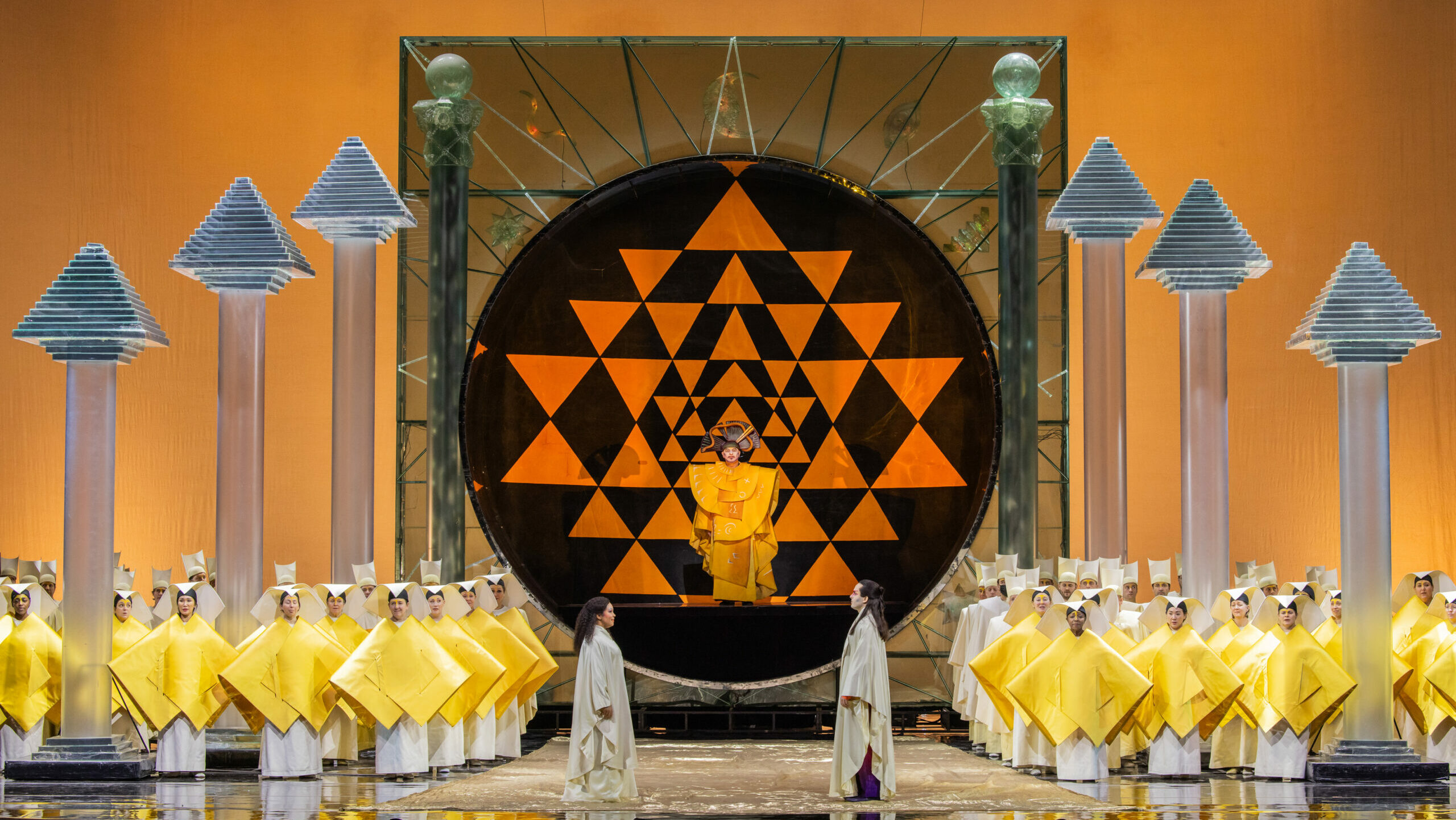

Wagner must intrude at some point because he invented film music.
My first exposure to Lucia di Lammermoor came under the auspices of The Three Stooges.
Some consider Katharine Hepburn a tomboy — I don’t share that view, but the particular iconoclastic style she was already cultivating in her early days certainly suits Jo March.
“That girl’s a character!”
“I think she’s got something!”
One of the greatest pleasures of our continuing Katharine Hepburn series for me has been rediscovering how marvelous she can be.
The characteristics that made Katharine Hepburn‘s performance in A Delicate Balance work so well do her a disservice here.
Terror and breakdown is hinted at strongly, almost blatantly, but the characters never seem to move an inch past the comfort zone.
Tom Hiddleston manages to balance the many layers of Coriolanus, from his military strength and hot temper, to his strangely overpowering sense of personal dignity, which is ultimately his tragic flaw.
Nearly 70 years after its debut, A Streetcar Named Desire remains the greatest stage-to-screen adaptation of all time.
There are a number of fine elements in this film, and a couple that are exceptional—but I can’t get over the wrongness of its look.
This made-for-network version is surprisingly provocative and creative for its time. It’s not an unqualified success, but in terms of understanding the play as a whole, it’s a necessary part of the conversation.
Perhaps the idea here is to give Tennessee Williams’ 1947 play a renewed sense of visceral power that speaks to a younger audience? Maybe, but it doesn’t speak to me.
Although Kim Stanley’s big-screen appearances were rare—four major film roles, plus the uncredited narration in To Kill a Mockingbird—she was the leading lady of television drama’s “Golden Age.”
In I Can’t Imagine Tomorrow, we’re contending with Kim Stanley and the last gasp of the Method.
Reducing Antony and Cleopatra to the status of mere mortals makes their torrid, tragic love seem rather ho-hum.
I think that Cat on a Hot Tin Roof is the Williams play I have seen most often, on stage and through film. So, shall we share some observations on some of these experiences?
Gorgeousness is, of course, its own reward—and the movie of Cat on a Hot Tin Roof has many other pluses as well—but I do think Elizabeth Taylor‘s and Paul Newman‘s good looks pose an ongoing distraction.
This Cat seems more together than most. Unlike many of the teleplays we’ve considered so far, this one is actually directed by a Tony-winning theater director, and I’d venture that accounts for its relative success.
Cat on a Hot Tin Roof is sometimes called the American King Lear, which nods to themes of a father and his disappointing children… but I think it’s also Shakespearean in its sprawl and grandeur.
Yet there remain some memories and impressions I know we’d both like to share—on a few stage performances, memorable in various ways, so how about one more roundup?
Katharine Hepburn is better than I remembered, including making a reasonable attempt at a Southern accent. And, of course, there is distinctive star quality to burn, as well as interpretive intelligence.
Shirley Booth‘s Amanda reminds us again of her astonishing range, and truly unique (yes, a word I hate, but I mean it here) ability to mix heartbreak and humor in the same breath.
More than any actor I’ve seen on stage or screen, John Malkovich communicates the essential ambiguity of the character.
The 1950 movie seems intent to turn the story into a screen romance, eliding or ignoring the play’s mournful tenor.